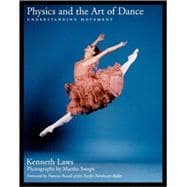
What is included with this book?
| Foreword | v | ||||
|
|||||
|
2 | (16) | |||
|
4 | (3) | |||
|
7 | (3) | |||
|
10 | (2) | |||
|
12 | (2) | |||
|
14 | (2) | |||
|
16 | (2) | |||
|
18 | (16) | |||
|
20 | (4) | |||
|
24 | (5) | |||
|
29 | (2) | |||
|
31 | (3) | |||
|
34 | (28) | |||
|
36 | (4) | |||
|
40 | (2) | |||
|
42 | (1) | |||
|
43 | (4) | |||
|
47 | (1) | |||
|
47 | (2) | |||
|
49 | (2) | |||
|
51 | (5) | |||
|
56 | (3) | |||
|
59 | (3) | |||
|
62 | (24) | |||
|
66 | (3) | |||
|
69 | (2) | |||
|
71 | (1) | |||
|
72 | (3) | |||
|
75 | (1) | |||
|
76 | (2) | |||
|
78 | (3) | |||
|
81 | (1) | |||
|
82 | (4) | |||
|
86 | (16) | |||
|
88 | (3) | |||
|
91 | (3) | |||
|
94 | (3) | |||
|
97 | (1) | |||
|
98 | (2) | |||
|
100 | (2) | |||
|
102 | (22) | |||
|
104 | (6) | |||
|
110 | (2) | |||
|
112 | (1) | |||
|
113 | (5) | |||
|
118 | (1) | |||
|
119 | (2) | |||
|
121 | (3) | |||
|
124 | (18) | |||
|
126 | (6) | |||
|
132 | (2) | |||
|
134 | (2) | |||
|
136 | (3) | |||
|
139 | (3) | |||
|
142 | (22) | |||
|
145 | (6) | |||
|
151 | (4) | |||
|
155 | (4) | |||
|
159 | (3) | |||
|
162 | (1) | |||
|
162 | (2) | |||
|
164 | (14) | |||
|
166 | (4) | |||
|
170 | (2) | |||
|
172 | (1) | |||
|
172 | (1) | |||
|
173 | (1) | |||
|
174 | (1) | |||
|
175 | (1) | |||
|
175 | (3) | |||
|
178 | (7) | |||
| Appendix A: Linear Mechanics and Newton's Laws | 185 | (7) | |||
| Appendix B: Rotational Mechanics | 192 | (5) | |||
| Appendix C: Anatomical Data for Dancers | 197 | (2) | |||
| Appendix D: Rotational Inertia for Some Body Configurations | 199 | (5) | |||
| Appendix E: Acceleration Away from Balance | 204 | (3) | |||
| Appendix F: Off-Balance Pirouettes | 207 | (3) | |||
| Appendix G: Arabesque Turn Analysis | 210 | (5) | |||
| Appendix H: Quantitative Analysis of the Grande Pirouette | 215 | (4) | |||
| Appendix I: Quantitative Analysis of the Fouette Turn | 219 | (2) | |||
| Appendix J: Quantitative Analysis of the Supported Fouette Turn | 221 | (3) | |||
| Appendix K: Lean, Don't Slip | 224 | (5) | |||
| Glossary | 229 | (5) | |||
| Index | 234 |
The New copy of this book will include any supplemental materials advertised. Please check the title of the book to determine if it should include any access cards, study guides, lab manuals, CDs, etc.
The Used, Rental and eBook copies of this book are not guaranteed to include any supplemental materials. Typically, only the book itself is included. This is true even if the title states it includes any access cards, study guides, lab manuals, CDs, etc.